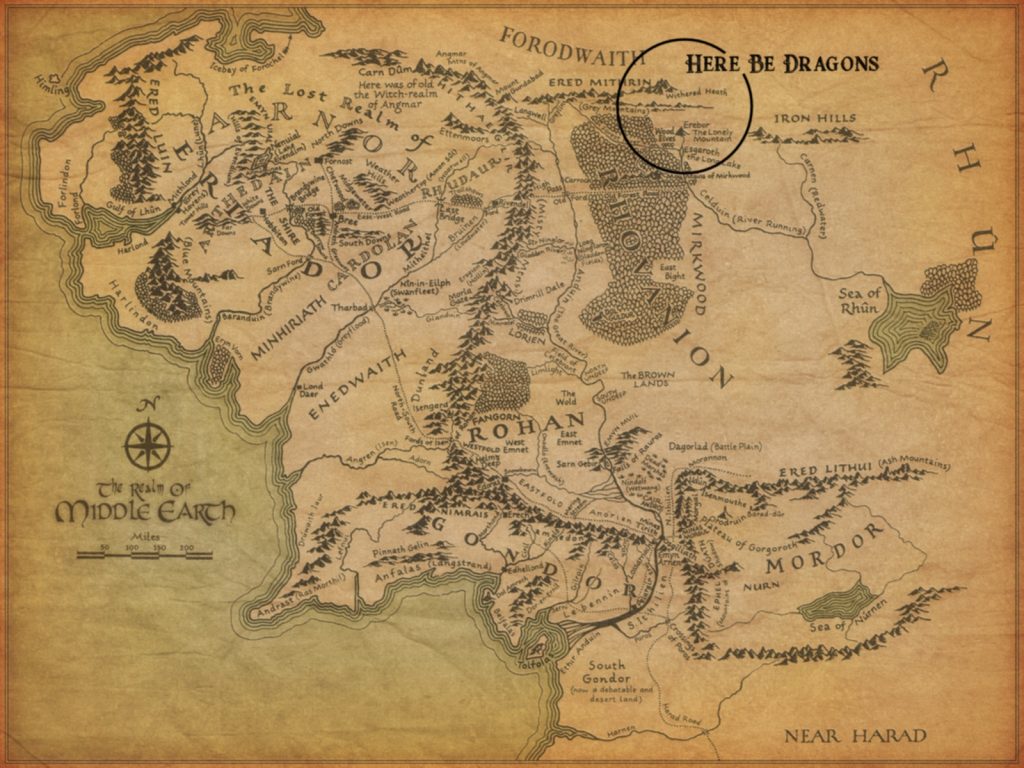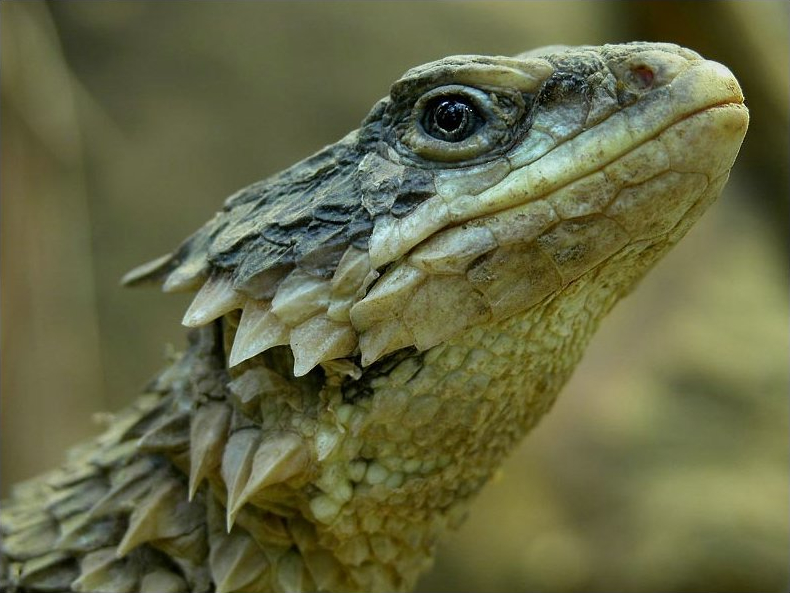Hello, Mythsters!
Last we looked at Beowulf’s fire-drake and I briefly mentioned Smaug in that post. Well, we figured it was time he got a post of his own. In that post, I stated that the fire-drake of the poem was the inspiration behind Smaug. Turns out, it’s not quite so. While they share similarities, Tolkien himself stated that Smaug was based more on the dragon of Norse mythology, named Fafnir. We’ll surely be getting into Fafnir at a later stage so I won’t be covering him much. No, this post is all about Smaug the Golden.
To give you a taste of who we’re talking about here are two clips of Smaug, one from 2013’s Desolation of Smaug and the other from the 1977 version of The Hobbit.
Smaug in Popular Culture
Smaug is prominent in Middle-Earth lore and canon, and has infiltrated pop culture over the last several decades. His fame spread across various media, having been featured in films of Tolkien’s work. There are variations on The Hobbit, from 1966 to 2012, with the latest trilogy by Peter Jackson. You know, Benedict Cumberbatch might very well be some descendant of Smaug with how he nailed the audition.
But Smaug didn’t end with the silver screen. He populated video games as well, appearing in iterations of The Hobbit and role-playing games of Middle-earth. Smaug has become iconic, even having a page on Forbes. He’s currently at number one as the most wealthy fictional character. But of course, that goes without saying.
There’s even an airplane with Smaug painted on it in New Zealand.

There’s also the realm of visual art that he has invaded and conquered. Smaug has been widely painted, appearing in works created by great modern artists such as John Howe, Rodney Matthews, Alan Lee, and Tim and Greg Hildebrandt. And including a couple of pieces by Tolkien himself. This is one dragon that has been immortalized time and again.
Fire-Drakes

With those tid-bits out of the way, because we had to sing his praises, let’s take a closer look at the dragon. His backstory is a good place to start. Smaug, like other dragons of the Third Age, lived in the Withered Heath beyond the Grey Mountains, which I’ve marked on the map above. He was the mightiest of the Grey Mountain dragons, for his Age in Middle-earth, that is.
According to Creatures of Middle-earth (2nd edition), Smaug was a son of the greatest dragon, Ancalagon, which places his birth sometime in the First Age. He apparently had many siblings (his dad was a busy dragon, after all) but three are mentioned in this RPG manual, namely Utumkodur, Throkmaw, Ruingurth.
Ruingurth was a reddish-brown fire-drake and apparently ugly, and he’s the oldest and slowest of the Great Worms. Throkmaw was a black fire-drake, second in might only to Smaug, known for prominent powerful jaws. Utumkodur was a golden fire-drake, truly golden, and older sister to Smaug. She was larger and stronger than Smaug.
Of course, this is only a theory of Smaug’s origins, and not one widely accepted. The generally accepted one is that Smaug wasn’t even a fully grown dragon by the time he attacked the cities Erebor and Dale, placing his birth sometime in the early Third Age. Hard to imagine him being a juvenile or young adult, right?
Regardless of origin theories, Smaug was what was called a Fire-Drake. In Arda, the world in which Middle-earth exists, dragons were bound by the same five elements as other creatures: light, air, water, earth, and fire. Of the dragons, fire-drakes were the most powerful, being the true descendants of the first dragon Glaurung, the Worm of Morgoth and the father of dragons, who was a fire-drake himself.
Smaug’s Dating Profile

Now that we have a better idea of where Smaug came from and his lineage, how about we tackle his profile. Smaug is, after all, an unusual name, even for a dragon if you go by those of others mentioned. So what does it mean? Well, according to Tolkien, the name Smaug is derived from the Proto-Germanic verb “smeuganan” or Old English “smūgan” which means “to creep” or “to squeeze through a hole”. Which is rather fitting given how he got into the Lonely Mountain.
Not so fitting, however, considering his size. Smaug wasn’t the largest dragon, but he was nevertheless an impressive specimen. There isn’t an agreed upon size for him but there are relative remarks for comparison. From Tolkien’s letter, Smaug’s size in relation to Bilbo Baggins in his painting above is an indicator. Doesn’t seem that impressive, but then Tolkien mention’s Bilbo’s dimensions were too large, and that the hobbit is actually invisible to the drake there. So much, much smaller. Apparently, Tolkein also describes the Secret Tunnel of Erebor, giving measurements. Not even fully grown, Smaug couldn’t fit in that tunnel. When the dragon grew up, he could fit the tip of a nostril in there. Talk about a growth spurt.
But, according again to the 2nd Edition Creatures of Middle-earth RPG manual, Smaug was 90 feet long and sporting a 150 foot wingspan. That’s 27.4 metres in length and 45.7 metre in wingspan. Now that is quite something. It also fits within the physical ratio for plausible flight.
Speaking of those wings, while Smaug was portrayed as a wyvern in the newest The Hobbit films, he was actually a dragon in the 4-legged 2-winged sense of the word. He was a red dragon, too. Because, well, fire, I guess. So where does “Smaug the Golden” come from? His scales apparently had a golden sheen to them, such that when he was in sunlight, he looked like a golden dragon.
And while we’re looking at titles, why not honor the great dragon with a few more of the titles he has received? Like “Magnificent” or “Tremendous”. Maybe some more of the colourful ones given to him by Bilbo, like “Impenetrable” and, my favourite, “Chiefest and Greatest of Calamities”. Like all dragons, he loved flattery, so it’s no wonder he collected titles like he hoarded treasure.
Which leads me to another tid-bit of Smaug. While his scales were, as Bilbo remarked, impenetrable, his underbelly was not quite so. Indeed, because it was so soft and Smaug had slept on his treasure so long, some of that treasure actually embedded into him, becoming a sort of shield to protect his vulnerable underside. He was golden for that part, too. And shiny. And very armoured.
Of course, as a South African, I can’t help but boast that Tolkien was home-brewed. In fact, due to him being born in the city of Bloemfontein (blue-m-fawn-tane), a new genus of southern African armoured lizards was named after Smaug.

Goodness, Smaug was greater than I expected and so, too, this post. But that’s all for now, of course if you have some treasure of Smaug i’ve not included, please hit us up in either a comment here, a tweet, or through email.
So until next time, later, Mythsters!
Sources:
- Creatures of Middle-earth (2nd edition)
- https://middle-earth.xenite.org/where-did-smaug-come-from/
- https://www.forbes.com/special-report/2012/fictional-15-12/smaug.html
- https://www.amnh.org/exhibitions/life-at-the-limits/protect-and-prosper
- http://tolkiengateway.net/wiki/Smaug
- https://lotr.fandom.com/wiki/Smaug

Anike Kirsten
Anike lives in the dead centre of South africa, an area called the Bo-Karoo, where she looks for spiders for fun. She is a writer, illustrator, mother, wife, and nerd-geek hybrid. Anike enjoys all forms of science fiction, fantasy, and horror. Well, almost all forms. Not romance. And loves stories from her home country. She is also one of the Mythster voices who may or may not go off the rails about something or another.

Be First to Comment